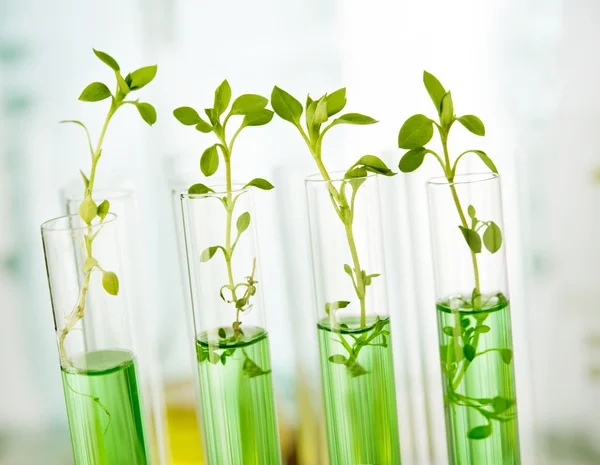Before it was mixed into your morning coffee, sugar had deep roots— literally.
Unlike humans who rely on food for energy, plants can’t eat food to grow. Instead, plants have to make their own food in the form of sugar. If you’ve ever baked cookies or added sugar to your coffee, you’ve likely used table sugar, also known as sucrose. This type of sugar comes from two high sugar producing plants: sugarcane and sugar beets. However, sugar isn’t just a food source for plants, sugars are the building blocks of plants.
In the plant world, not all sugars are sweet. Many of the non-sweet sugars serve as building blocks that plants use to grow leaves, roots and stems of plants. In biology, sugars are called carbohydrates. Plant carbohydrates are all around us—they make up the clothes we wear, the furniture we sit on, and even the fuels that could power our future, shaping a more sustainable world.
Sucrose levels in sugar beets and sugarcane. Image from: Muir, B. M., & Anderson, A. R. (2021). Development and diversification of sugar beet in Europe. Sugar Tech, 24(4), 992–1009. https://doi.org/10.1007/s12355-021-01036-9
All plant carbohydrates are produced through a process called photosynthesis. Plants use sunlight, water, and carbon dioxide from the air to produce oxygen and sugar building blocks, which are plants’ main source of energy. However, plants also use carbohydrates for storing energy or building structural support.
Plants are able to stand upright without a skeleton because each plant cell contains a cell wall. The cell wall surrounds each cell and allows it to form a rectangle shape. This shape allows for the cells to tightly pack together. This is similar to a brick wall, where the cells are lined up together to create a strong foundation. The plant cell wall also serves as a defense against diseases or insects.
Microscopy image of plant cells Image from: https://www.azooptics.com/Article.aspx?ArticleID=1807
Sugars in the Cell Wall
The plant cell wall is made up of many different types of carbohydrates. The main carbohydrate is called cellulose, which is the primary building material for plant cells. Cellulose is the most abundant carbohydrate in nature. Together, all the plants on Earth produce over 100 billion tons of cellulose per year. To compare, the world only produces over 180 million tons of table sugar!
Since cellulose is naturally abundant, it is found in many products that we use every day. Cotton is around 90% cellulose, which means that many of our clothing items are made from plant sugars! Paper, cardboard, and tissues are all made from wood pulp, which is rich in cellulose. This means that your desk, notebook paper, and pencil could all be made up of plant sugars!
Cellulose Applications Image from: https://greenstarsproject.org/2024/05/05/why-is-cellulose-so-important/
Another important carbohydrate found in plant cell walls are pectins, which are abundant in fruits. Pectins can form a gel-like texture, which can be used in jams and jellies to give it a smooth texture. Some fruits high in pectin are apples, grapes and citrus fruits.
Starch is another carbohydrate that is naturally found in plants as a way to store energy. Common plants that are high in starch are corn, rice, and potatoes.
Pectin’s Role in Jelly and Jams Image from: https://gumstabilizer.com/pectin-in-jam-making/
How Plant Carbohydrates Could Help Solve Global Challenges
As the world faces challenges like climate change, resource depletion, and food insecurity, plant carbohydrates are a potential solution to creating more environment-friendly and renewable materials. Since carbohydrates in the cell wall are so abundant, they may offer sustainable alternatives to many products that traditionally come from fossil fuels.
Cellulose, pectins and starch are currently being developed into biodegradable plastic alternatives. Pectins can be made into plastic-like films, which could replace plastic packing. Starch and cellulose can also be produced into biodegradable food containers, providing many plant-based alternatives that are made from renewable materials.
Also, biofuels— fuels made from renewable biological materials— can be produced by plant-grown materials such as cellulose! Biofuels are an alternative energy that is being researched currently to replace fossil fuels that rely on oil and gas. However, cellulose is hard to isolate from plants because the cell wall is so tightly connected, and it can’t dissolve in water. Researchers right now are finding more ways to harvest cellulose from plants to be used for these sustainable applications.
Starch Biodegradable Food Containers Image by: https://pakfactory.com/blog/why-switching-to-cornstarch-packaging-is-beneficial-to-your-business/
Currently, as climates and weather patterns are changing, farmland and soil have been affected by droughts or floods. When droughts occur, there is less water to dilute the salt out of the soil, making farmland unusable to grow crops or plants. Scientists are working on creating crops or plants that can be grown on these lands to be used for these sustainable biomaterials or bioenergy by modifying how the plant cell wall grows. This would allow crops to thrive in areas that are not suitable for traditional agriculture, opening up new possibilities for farming.
Land with High Salt Levels Image by: https://www.fao.org/global-soil-partnership/areas-of-work/soil-salinity/en/
A Sustainable Future Powered by Plants
Plants are far more than just the foundation of our food system— they are also an essential part of creating a sustainable future. Carbohydrates like cellulose, pectin, and starch are helping to drive innovations in renewable energy, biodegradable materials, and sustainable agriculture. As research into these plant-based resources continues, we may soon find ourselves relying even more on plant cell walls to create more sustainable solutions. The power of plant carbohydrates isn’t just in the food we eat— it’s in the materials, fuels, and solutions that will shape a more sustainable and environmentally friendly world for generations to come.
About the Author
Alyssa is a current Ph.D. student in the Biochemistry Department. She received an undergraduate degree in Cell and Molecular Biology from the University of South Florida. Her research focuses on studying cellulose synthesis regulation in plant cell walls to help advance sustainable fuel and biomaterial initiatives. Outside of the lab, Alyssa can be found outside in her garden, hiking and exploring the North Georgia mountains, or spending time with her cat, Eli.
- This author does not have any more posts.





